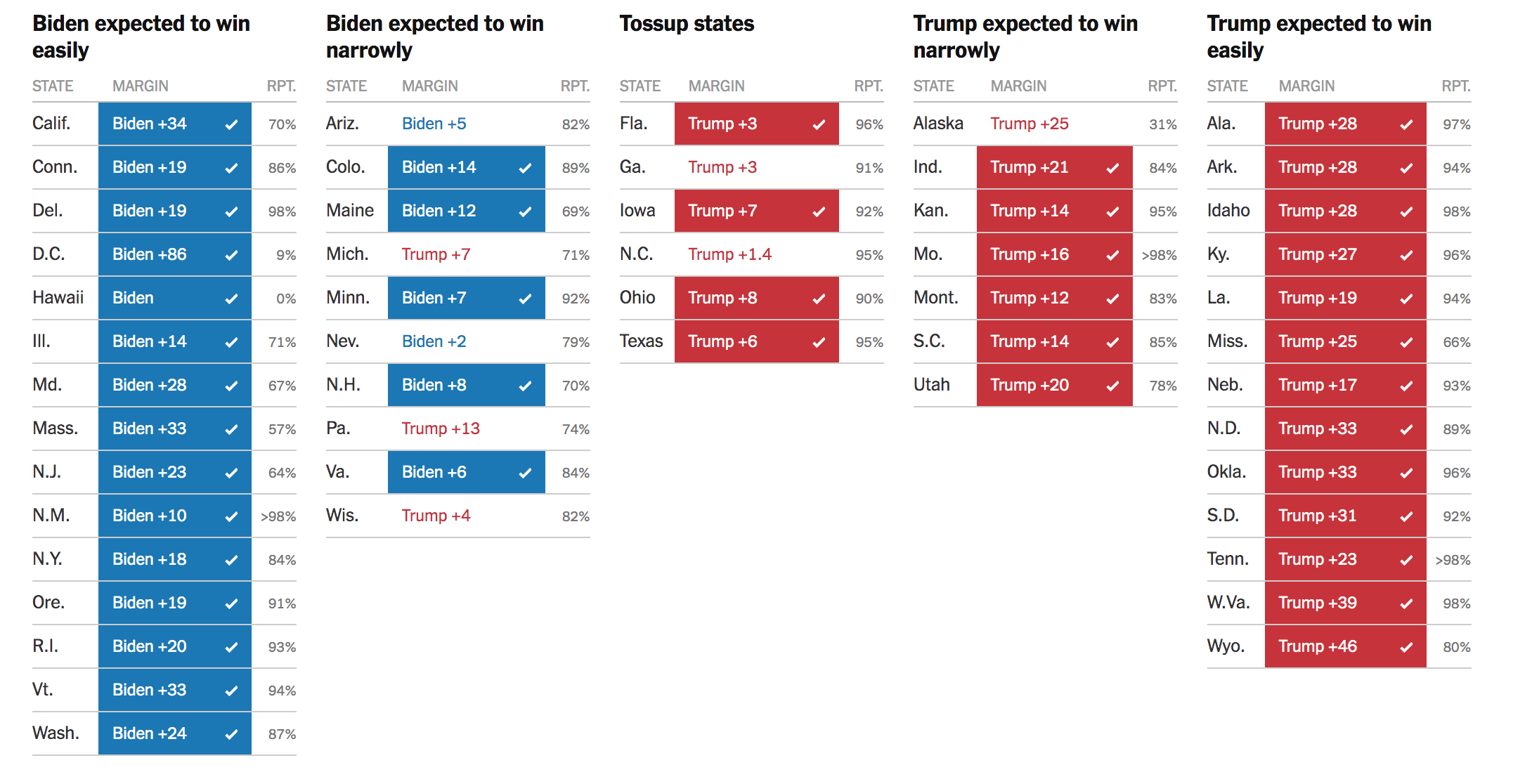America’s approach to selecting their presidents may look like it’s working in complex ways at first but don’t worry, let us break it down for you.
From distance measurement (miles vs. kilometres) to temperature measurement (lbs vs. kg), the United States has no limits to the unique ways they operate. Fortunately or unfortunately, this applies to their Presidential Elections.
In the United States, when the American citizens vote, they’re not voting for their president.
What they’re voting for is who their state votes for.
This system in which they select their presidents is termed, ‘Electoral College’.
Electoral College
Here’s how it works: each state in America holds a certain number of electoral votes. For example, North Dakota (population: 762,062 as of 2019) has three electoral votes while Arizona (population: 7.279 million as of 2019) has eleven electoral votes.
Caught a pattern there?
The number of electoral votes that are assigned to each state depends on the population of the respective state. These numbers are not fixed, however; a census is conducted every ten years to track population gain or loss which may shift the numbers.

Take a quick calculation, and you will find that there is a total of 538 electors with the midpoint being 269. Hence, the magnitude of the election results anxiety comes down to the magic number, 270, the minimum number of electoral votes to win.
But Wait, It Gets Complicated
With the huge contrasts in electoral votes per state, this has inevitably led to certain states deciding the election results.
States such as California (55 electoral votes), Texas (38 electoral votes), Florida (29 electoral votes), and New York (29 electoral votes) are usually those the candidates want to win the most.
Why? By securing them, this would mean they’ve scored 142 votes. That is about half of what the candidate needs to win in just four states. This explains why certain states end up deciding the result, and why you’ve been hearing “states” instead of numbers as you watch CNA the whole day today.
Plus, most states lean heavily towards one party or the other; where certain states have a long history of voting for a particular party. They’re also known as ‘safe states’. For example, Democrats can rely on states like Oregon, Maryland and Massachusetts. Or Republicans can count on Alabama, Kansas and Idaho.
This is why you might find certain states to be ‘expected to win’ by certain candidates.

Hence, attention is usually given to the states whose party loyalties are unclear, also known as swing, toss-up, battleground or purple states.
These are where candidates will often visit the most to secure their votes.
But What About the Popular Vote?
Apart from the Electoral College results, the American citizens will also have a view of the popular vote. In a popular vote, the candidate who gets the most votes nationwide is said to have won the popular vote.
Simple, right?
If you’ve 3 votes and your friend has 2 votes, you win the popular vote. Screw that Electoral College thingy.
The US Presidential Election, however, do not consider the Popular Vote into the equation.
Hence, if a candidate loses to another by a meagre 1% of voters, they lose 100% of the electoral votes.
If a state has 3 electoral votes and Trump gets 4,000,001 votes while Biden gets 4,000,000 votes, Trump will still get the 3 electoral votes.
Take, for example, the 2016 elections, Hillary Clinton had won almost three million more votes nationwide compared to Donald Trump but still lost the Presidency.
Hence, presidential candidates do not compete to win a popular vote but an electoral college.

What’s Next
Once the voters have made their presidential choice and hence, influenced what the state will be voting for, the slate of ‘electors’ will cast the deciding votes for the presidential and vice-presidential candidates during a meeting of the Electoral College in December.
In 48 states, these electors will ‘pledge’ to vote for the presidential and vice-presidential candidates that received the most votes in their respective state. So no, there will be no ‘backsies’.
However, two states, particularly Maine and Nebraska, have slightly different systems: Two electors will ‘pledge’ to vote for the candidate that wins the state’s overall popular vote with the remaining electors allocated to the winner in each congressional district.
Can the Electoral College End Already?
For years, polls have shown that most Americans prefer a popular vote system as compared to the electoral college. This was also reflected in the 2020 Gallup poll that indicated that 61% of US adult respondents wanting to abolish it.
But it is not that easy.
To abolish the Electoral College entirely, it will require that the US pass a constitutional amendment (by two-thirds of the House and Senate and approved by 38 states) — or assemble a constitutional convention. Either method is unlikely, as this would mean that small states will have a considerable reduction in their influence on the presidential outcome.
So now that you know why your friends are all buzzing on and on about the current US elections, go forth and buckle up on your rollercoaster.
And yes, as of the time of writing, people are still looking at the swing states. You can read this article on why it takes so long for the results to come in this year.
Would you be jailed for being half-naked in public? Well, the answer will shock you. Seriously. Watch this to the end and you'll understand:




